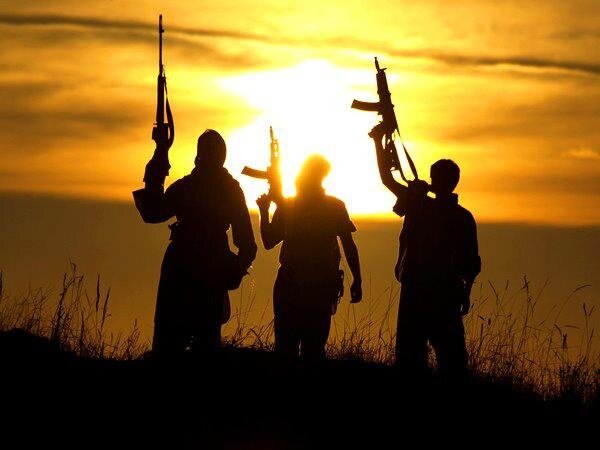Twitter’s mind-boggling worldwide popularity can likely be attributed to the use of brevity to contextualize personal experience. In a fast-paced age, 140-character messages are quick enough to convey an emotion, a stance, a persona, without slowing anyone down.
For western civilization, Twitter is largely ego-oriented. People tweet their mini-diatribes and follow celebrities they admire in order to feel a sense of connection to those they consider worthwhile.

Via: baconwrappedmedia.com
But how does Twitter serve other regions of the globe? What implications do the ease and brevity of this microblogging platform have for fundamentalists whose primary intention is to offend and afflict on the macro level?
ISIS (Islamic State in Iraq and the ash-Sham), a group of jihadist extremists who were alienated by al Qaeda earlier this year for being too extreme, are crucifying people in Syria and tweeting out the pictures so the entire world can see just how much they don’t fuck around when it comes to power and religious devotion.
The two men who were crucified on Tuesday were displayed publicly in the center of Raqqa, a small Christian community that ISIS took control of in 2013. Both Twitter photos show blank-faced young boys standing feet away from the mangled carcasses.

Via: TheDailyBeast
Much remains unclear about the two men with regards to which groups they were affiliated with. According to a jihadist Twitter account who is allegedly associated with ISIS, the men were executed on charges of planting IEDs (improvised explosive devices), most likely in a revolutionary attempt to combat ISIS’s strict hold over the region.
While murder is not a rare aspect of Syria’s brutal civil war in lieu of the barrel bombs and gas attacks, there is something particularly traumatizing about this public display of cruelty and the utter ruthlessness with which the images were tweeted.
Interestingly, the images are being circulated by anti-ISIS accounts as well as proud ISIS members who, according to The Daily Beast, “view the public crucifixions as a sign of their strength and an effective recruiting tool.”

Via: Vice
The original ISIS tweets fostered immediate gloating, “lol become new false jesus[,]” to which the original poster replied, “the spy next to him started urinating as soon as we tied him up, about 10 minutes after he was killed.”
Upon gaining control of Raqqa in 2013, ISIS allegedly met with the area’s Christian leaders and demanded that they either 1) convert to Islam, 2) accept the restrictions placed on them, or 3) die.
While clearly egregious, this situation is not particularly shocking. I have always been a firm believer in the potent corruption bred by organized religion. I will never pretend to understand martyrdom or the justification of murder in the name of god, but I guess when you rely on something external for your code of ethics, everything becomes a gray area.

Via: BBC
Because of Twitter, the whole world has been granted a momentary glimpse into the psyche of a homicidal fundamentalist. As far as a brief contextualized persona, I don’t think this is what the parents of Twitter had in mind when they birthed their digital child.
Yet, knowledge is knowledge. Because of Twitter, we are now a little bit more familiar with what daily life is like for a Raqqa citizen. We have seen a digital version of the very real atrocities that define the Syrian narrative at this very moment.
Don’t you feel lucky?
Featured photo courtesy of: TheDailyBeast





